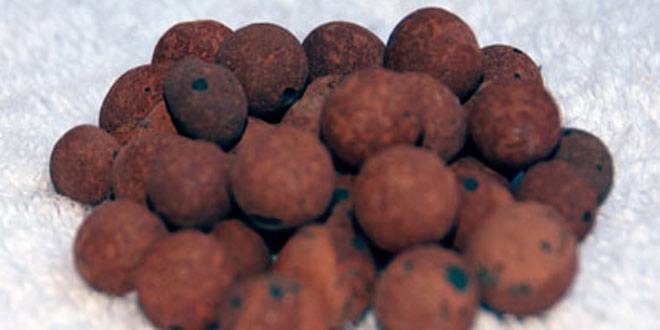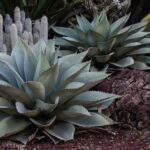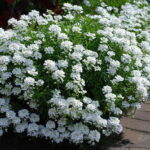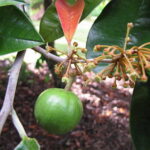Although growing hydroponically is soil-free, this doesn’t mean that there is nothing to support our plants.
In most hydroponic systems, growers use different types of hydroponic media to help support their roots and maintain a good water/oxygen ratio.
In this guide, I’ll give you a breakdown of the most popular types of hydroponic growing media. Every hydroponic gardener has their own preferences, so I’ll give you the advantages and disadvantages of each medium so you can choose the one that works right for your situation.
Coco Peat / Coco Coir

What is Coco Coir?
Coco coir is quickly becoming a favorite among hydroponic gardeners. It’s made from ground up coconut husks and represents a giant leap in hydroponic growing media.
To understand why ground coconut husks are becoming so popular, let’s take a look at what a coconut husk does for a coconut. Coconuts are grown in tropical regions, and often times they fall into the ocean when they are ripe. The husk protects the seed and flesh from sun and salt damage. Most importantly, the husk acts as a great growing medium for the coconut to germinate and create new trees.
Now apply these benefits to hydroponics. The ground up coco coir will act as a great hormone rich and fungus free medium for our plants. In the same way that it helps the coconut to germinate, it will help all of our seeds and seedlings to start strong. Coco coir has a great air to water ratio, so we don’t have to worry about drowning our roots. Best of all, it’s completely renewable. Coconut husks would generally go to waste or be composted if they weren’t used in hydroponic applications. Here, we’re taking what was once a waste product and re-purposing it to grow more plants!
Read the in-depth coconut coir guide here.
Growing Tips
When coupled with fabric pots moisture problems can be avoided.
Built up salts can often be a problem, but there are many lines made particularly for coco that allow for easier flushing. Try using Canna Coco and Smart Pots.
Benefits of Coconut Coir
- Usually organic
- Sustainable
- Compactable (buy compressed, expand at home…saves money on shipping)
Downsides of Coconut Coir
- Holds a lot of water and may drown plants
Expanded Clay Pellets
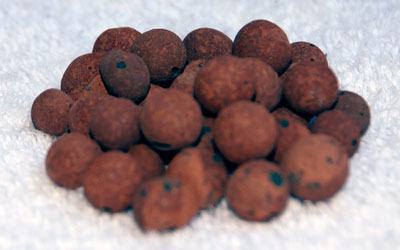
What Are Expanded Clay Pellets?
Arguably one of the most popular media to use in days past has been hydroton expanded clay pellets. As their name suggests, these are made by expanding clay to form round balls of porous material. The best part about them is the fact that they release almost no nutrients into the water stream and are pH neutral. In addition, their spherical shape and porousness help to ensure a good oxygen/water balance so as not to overly dry or drown the roots.
In my experience, the only two downsides to using hydroton pellets has been their weight and their draining ability. In certain hydroponic systems, like ebb and flow, filling up an entire flood table full of hydroton is going to leave you with a very heavy system. They also drain and dry out very fast because there is much more space between each pellet than other hydroponic growing media. They can be used to great effect to line the bottom of an growing tray, when draining is an issue. Other than these two disadvantages, hydroton pellets are a great, re-usable media to use!
Read the in-depth expanded clay pellet guide here.
Benefits of Expanded Clay Pellets
- Reusable
- pH Neutral
- Do not compact
Downside of Expanded Clay Pellets
- Heavy
- Drain and dry very fast, roots may dry out
- Strip mined (environmental concerns)
Reader Experiences
Endlessly reusable, but heavy and drain poorly – can dry out roots. Works great as a reusable medium and allows for easy plant and root removal. Roots sometimes get entangled in the pellets but generally they are easily cleaned.
Sure To Grow
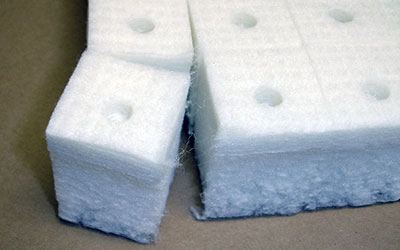
What is Sure to Grow?
Sure to Grow is the leading company offering a plastic-based growing media. There are two camps here: one side loves STG, and the other can’t stand it. STG’s marketing suggests that it’s a wonderful growing media that has a plethora of advantages over other growing media, but the gardening community seems to be on the other side of the coin.
Reader Experiences
”Just don’t really like this, I feel like they re branded a basic plastic medium as some magic media.”
“In the industry we call this stuff “sure-not-to-grow” because it sucks. Spun cotton breeds algae and makes me really mad.”
“I currently use it in Ebb & Flow and my experience with it at first was generally negative. Once my plants got older I started to see the benefits of it and now for long term grows, I actually prefer it to most other medium.”
Benefits of Sure To Grow
- Roots embed deeply into the medium and the plants and medium become one.
Downsides of Sure To Grow
- Expensive, not re-usable
- Need to have a top layer that stays 100% dry or it promotes algae growth.
Oasis Cubes
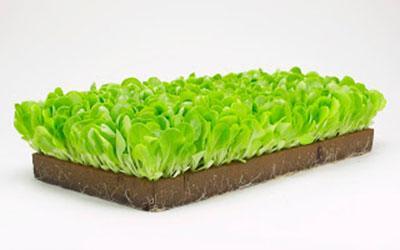
What Are Oasis Cubes?
Oasis Cubes are similar to rockwool cubes. If you’ve ever gotten flowers in that strange green foam-like substance, then you have a good idea what oasis cubes are like. It’s an inexpensive media that you can use for the germination and seedling grow phases.
Reader Experiences
“I absolutely LOVE the new oasis cubes. They reformulated their blocks a couple of months ago and the new stuff ROCKS. It no longer “crumbles” but crushes instead.”
“It is an inert media like rockwool but a fraction of the price. From the first couple of trials we have seen no germination or growth difference in comparison to rockwool and it comes in dozens of different shapes and sizes, and requires no presoaking.”
Benefits of Oasis Cubes
Downsides of Oasis Cubes
- Not sustainable
- Not organic
- Useful for germination only, not as a full growing medium
Perlite

What is Perlite?
Perlite is something that many traditional soil gardeners already recognize. It’s a soil-free growing medium that has helped to add aeration to soil mixes for years. It’s created by air-puffing volcanic glass to create an extremely light and porous material. It has one of the best oxygen retention levels of all growing media because of how porous it is.
Its weight can be a downside in certain hydroponic systems where water interacts directly with the growing media, causing it to shift around and wash away. Because of this, perlite is rarely ever used alone – typically it is mixed with coco coir, soil, or vermiculite.
Read the in-depth perlite guide here.
Benefits of Perlite
- Lightweight
- High oxygen retention level
Downsides of Perlite
- Too lightweight for certain hydroponic systems
- Strip mined (environmental concerns)
- Potential particle inhalation danger
Growing Tips
Straight perlite growing is one of the tried and true methods of hydroponic production. With virtually no cation exchange this media is a great option for longer term crops; especially in drain-to-waste scenarios. You have to watch out for moisture deficiencies as it holds absolutely no water!
Starter Plugs
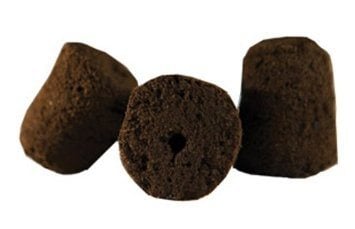
What Are Starter Plugs?
A new and innovative entry into the hydroponic media space is what I will call a sponge start. It’s made up of organic compost and doesn’t break apart like soil due to a biodegradable binding material.
For those who are concerned about sustainability and organics, sponge starts are a great way to start seeds and incorporate them into your hydroponics system. I use these extensively for my seedlings and clones and I have to say that they are the most convenient and simple way to start out large quantities of new plants. You simply place them in trays and the roots grow straight downward towards the opening in the tray at the bottom. This is helpful when transplanting into any type of hydroponic system, where roots growing out to the sides aren’t as beneficial.
Benefits of Starter Plugs
- Compact
- Great for starting seeds
- Relatively sustainable
Downsides of Starter Plugs
- Only suitable for starting seeds or cloning
- Expensive
Growing Tips
If they remain wet and fungus gnats are a problem in your area, the gnats will infect the plugs.
Rockwool
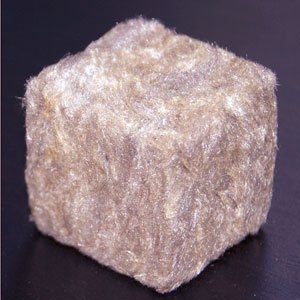
What is Rockwool?
Rockwool has been around for decades and is well-known in the hydroponic growing community. It is made by melting rock and spinning it into extremely thin and long fibers, similar to fiberglass. They take these fibers and press them into cubes of varying sizes.
Rockwool has all of the benefits of most growing media, with some pretty serious downsides. It’s not easy to dispose of – thin fibers of melted rock will last essentially forever when disposed of. Additionally, they usually come at a high pH and need soaking. The fibers and dust created in the spinning and compressing process can be harmful to eyes, nose and lungs. You can prevent the dust by immediately soaking rockwool in water once you take it out of the package. Because of these downsides, rockwool is rapidly being replaced by starter plugs as a reliable way to get seeds sprouting in your garden.
Benefits of Rockwool
- Great water retention
- Easy to dispose of
Downsides
Growstones
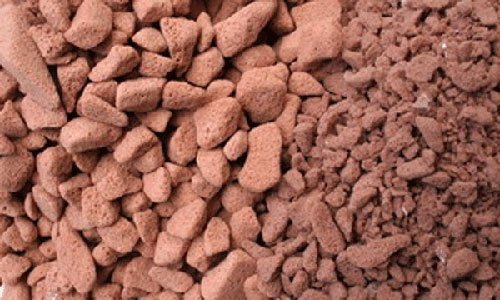
What Are Growstones?
I came across growstones a while back at a hydroponic expo and fell in love. The company takes discarded glass bottles from landfills, crushes them into a powder, melts the powder, and mixes in some calcium carbonate. It bubbles and then they cool the mixture and break it up to form what looks like lava rocks.It’s extremely lightweight, sustainable, and a great medium in almost any application. The one downside I”ve run into is that you typically can’t reuse it because roots will stick to it after harvest and ruin sterility.
Benefits of Growstones
- Lightweight
- Great air to water ratio
- Sustainable
Downsides of Growstones
Reader Experiences
“Cheap and easy to use.”
“One disadvantage is that due to their irregular sizes is that you have to mound more of them up to prevent light from entering your reservoir. Also if you tend to move plants from one medium or grow area to another as they get larger (like I do), Growstones tend to grip the plant roots too much and cause root damage. For this reason they are best used in a permanent grow bed.”
Rice Hulls
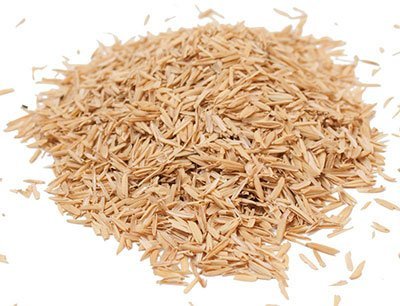
What Are Rice Hulls?
These are the shells that surround rice. They allow for good drainage and retain little water in general. Rice hulls are a product that would normally be thrown away, so putting them to extra use in hydroponics re-purposes something that would otherwise be thrown away.
Benefits of Rice Hulls
- Makes use of a byproduct that would otherwise be wasted
- Retains little water
Downsides of Rice Hulls
Pumice

What is Pumice?
Very similar to perlite. Lightweight mineral that is crushed and used in some hydroponics systems.
Benefits of Pumice
- Lightweight
- High oxygen retention level
Downsides of Pumice
- Too lightweight for some hydroponic systems if bought as small pieces
Sand
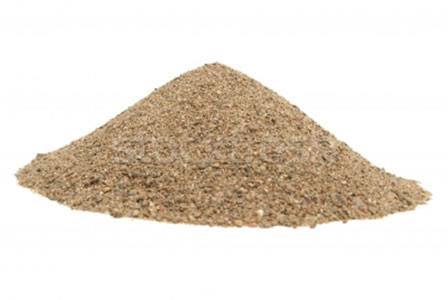
What is Sand?
One of the most plentiful types of media on the planet! Sand is extremely cheap (or free!) Sand is cheap and easily available. It’s a great way to get started, but it is fairly heavy, must be sterilized often, and has low water retention. Arguably the oldest hydroponic media, holds no water or nutrient load and can exacerbate deficiencies quickly.
Benefits of Sand
Downsides of Sand
- Heavy
- Low water retention
- Small size may affect certain hydroponic systems
Gravel
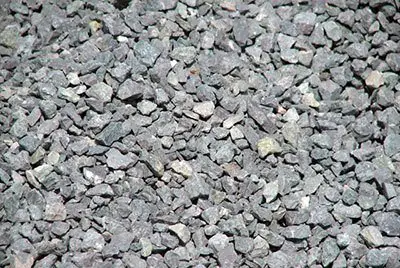
What is Gravel?
This is the same material that is used in aquariums. As long as it is washed, you can use any type of gravel. Relatively cheap and easy to clean. A great DIY starter media if you’re short on cash!
Benefits of Gravel
- Very inexpensive
- Easy to clean
- Drains well
Downsides of Gravel
- Heavy
- Plant roots may dry out
- Not suitable for certain hydroponic systems
Gravel Growing Tips
Works very well as long as it is not in contact with the water or it can cause PH swings. Great medium because it is cheap and readily available. It can be reused but due to their small size, it is common that they get very tangled in the plant roots which makes it not worth removing and cleaning since it is already so cheap.
Wood Fiber

What is Wood Fiber?
Simply wood. Great and efficient media for hydroponics. If you want to go truly organic with your growing media…you can’t get any better than wood chips! Additionally, some studies have indicated that wood chips reduce the effect of plant growth regulators, meaning your plants may grow slightly larger.
Benefits of Wood Fiber
- Organic
- Holds structure for a long time
Downsides of Wood Fiber
- Biodegradable
- May not be sterile
- May attract pests
Brick Shards
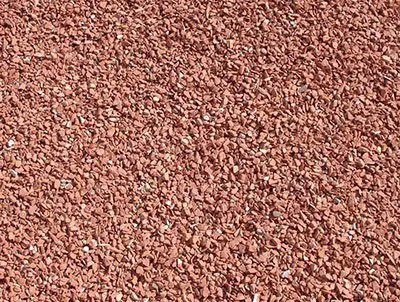
What are Brick Shards?
Name says it all: crushed up bricks. Very similar in effect to gravel. However, they may affect the pH as they are not pH neutral, and also require extra cleaning to get rid of brick dust.
Benefits of Brick Shards
- Inexpensive
- Easy to clean
- Drains well
Downsides
- May affect pH
- Requires more thorough cleaning
- Heavy
- Plant roots may dry out
Polystyrene Packing Peanuts
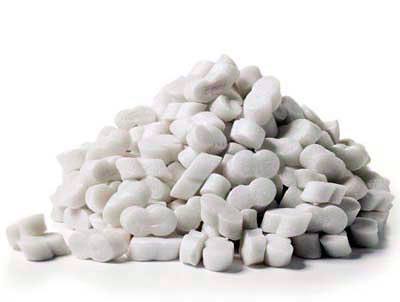
What are Polystyrene Packing Peanuts?
These are the standard packing peanuts used in the shipping industry. They’re cheap, available everywhere, and drain fairly well. Tough to use uncovered outdoor due to their light weight…the typical use is in Nutrient Film Technique systems. There is the possibility that plants will absorb styrene, so these may pose a contamination risk.
Benefits of Packing Peanuts
- Cheap (often free)
- Very lightweight
- Drain well
Downsides of Packing Peanuts
- Only polystyrene will work – biodegradable packing peanuts will turn to slush
- Potential for plants to absorb styrene
Vermiculite
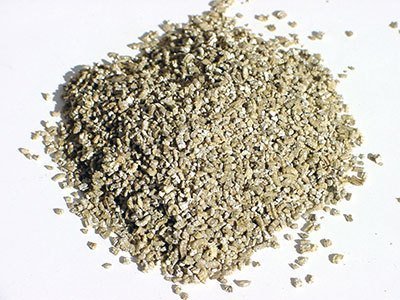
What is Vermiculite?
Vermiculite very similar to Perlite. It’s a mineral that is heated until it expands into pebbles. It retains more water than perlite and can wick (draw) water and nutrients upwards. Often used in combination with other types of media to create a highly customized media for specific hydroponic applications.
Read about vermiculite vs. perlite here.
Benefits of Vermiculite
Downsides
- Hard to find
- Expensive
- Can hold too much water
Reader Experiences
“Dirty nasty stuff that clogs up feed lines in recirculating systems, but is particularly useful in large scale drain-to-waste operations that need an increased cation exchange.”

